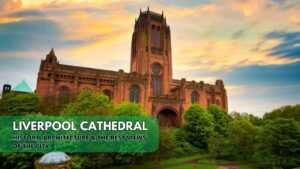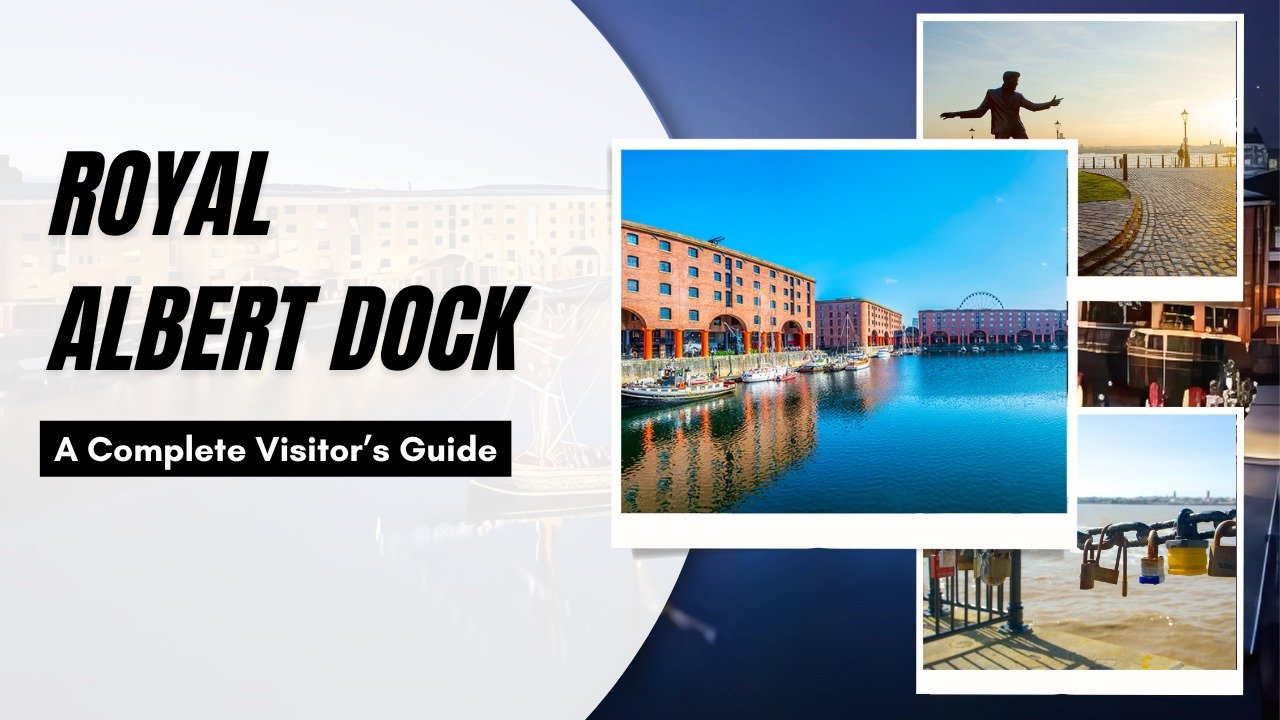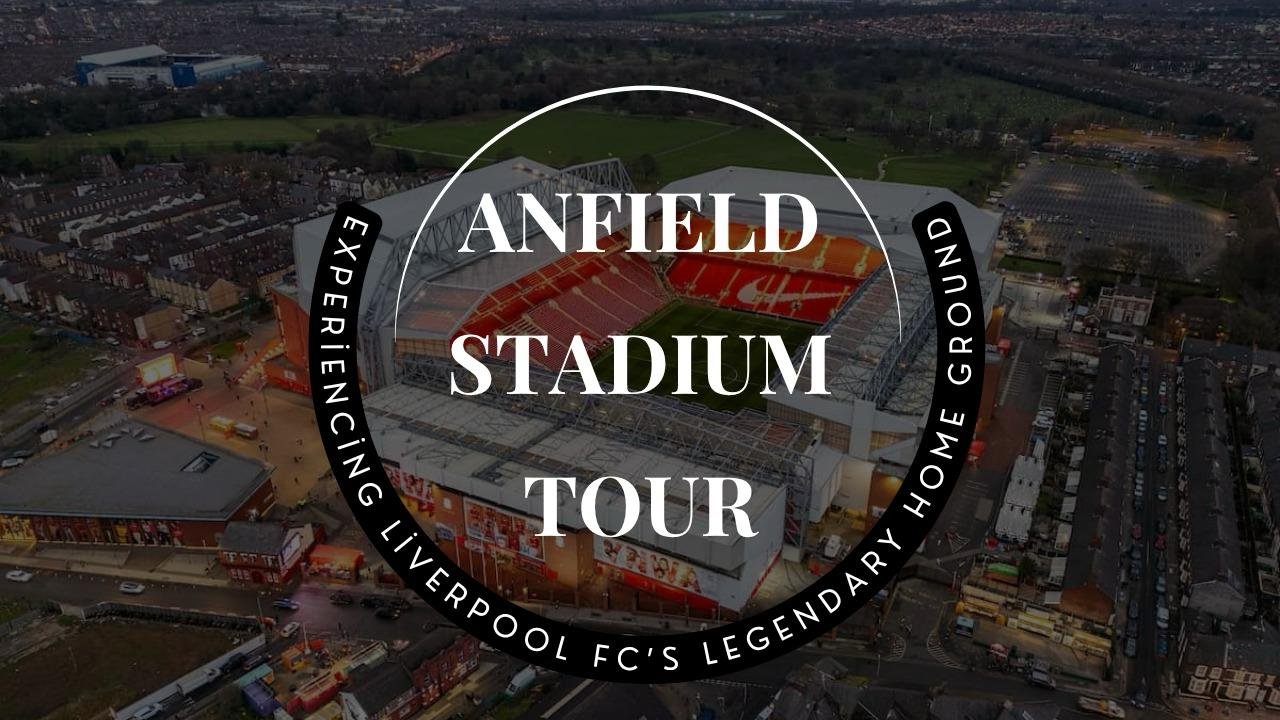
Liverpool Cathedral is not just a place of worship; it’s a symbol of ambition, resilience, and artistic brilliance.Liverpool Cathedral stands tall above the city. It is one of the biggest cathedrals in the world. People come to see its size, beauty, and peaceful atmosphere. The tower gives wide views of the city. The cathedral gives a quiet place to sit and think. Many parts of Liverpool’s history appear inside.
The building work took more than 70 years. Old and new styles come together in the design. Big stone arches fill the inside. A huge organ sits in the main space. Modern art and fun workshops take place here. The cathedral has something for everyone.
Historical Background
Liverpool became a city and an Anglican diocese in 1880, sparking the vision to create a grand cathedral that would reflect its growing influence and vibrant community. The idea was to construct a religious and civic space that would serve as a beacon for faith, art, and public life.
Design Competition and Giles Gilbert Scott: In 1901, a design competition was launched to find an architect for the new cathedral. Surprisingly, the winning entry came from Giles Gilbert Scott, a 22-year-old architecture student with a bold neo-Gothic concept. Though young and relatively inexperienced, his vision struck a balance between classical Gothic grandeur and forward-looking design.
Construction Journey
- Foundation stone laid: 1904 by King Edward VII
- Lady Chapel completed: 1910, the first consecrated section
- Main structure completed: 1978
Despite being interrupted by two World Wars, the construction spanned more than 70 years, reflecting both dedication and resilience. Over the decades, plans evolved—most notably, the decision to build a single towering structure instead of twin spires.
Architecture and Design
Liverpool Cathedral’s architecture is a celebration of neo-Gothic design, influenced by medieval cathedrals but interpreted in a modern way. It blends soaring stone vaults, pointed arches, and intricate stained glass with innovations in materials and layout.
Key Dimensions and Materials
- Length:7 metres (619 ft) – the longest cathedral in the world
- Tower height:8 metres (331 ft) – offering breathtaking 360° views
- Materials: Primarily local Woolton sandstone, symbolising Liverpool’s natural and cultural heritage
- Interior blocks: Each stone inside is uniquely sized, symbolising the individuality of people in a shared spiritual space
Highlights of the Interior
- The Nave: One of the tallest in Europe at 36.5 metres (120 ft), with dramatic vaulted ceilings and open space
- The Bridge: A remarkable architectural feature at the east end of the nave
- The Organ: The largest pipe organ in the UK, featuring 10,268 pipes—used in major services and performances
Stained Glass Windows: The cathedral’s windows were created by leading artists like James Powell & Sons, Burlison and Grylls, and Kempe & Co. They illustrate biblical stories, saints, and symbolic designs, casting colourful light throughout the vast interior.
Main Attractions & Highlights
- The Tower Experience: Take a lift or climb the stairs to the top of the central tower for the best views of Liverpool and beyond. On a clear day, you can see as far as the Welsh hills. The Bartlett Bells—the highest and heaviest peal of bells in the world—can also be seen here.
- The Lady Chapel: The first part of the cathedral to be completed, the Lady Chapel is a smaller, more intimate space filled with stunning detail. The stained-glass mosaic here celebrates influential women in Christian and social history.
- The Great West Window: A stunning work by Carl Edwards, this window is a glowing centrepiece, portraying Christ in Majesty and casting vibrant colours across the nave during sunset hours.
- Above & Beyond Tour: For those wanting a deeper dive, this premium guided tour takes visitors to normally restricted areas—hidden staircases, roof walkways, and high-level galleries. It offers a unique view of the building’s structure and artistry.
- Art and Exhibitions: Liverpool Cathedral regularly hosts modern art installations, blending ancient stone with contemporary creativity. In 2025, for example, “Helios” by Luke Jerram—a suspended, illuminated sun sculpture—captured imaginations and filled the space with wonder.
Visitor Experience
Opening Hours
- Cathedral: Usually open daily from 10:00 to 18:00
- Tower & special tours: May have separate schedules
- Note: Always check the website in advance for service times or event-related changes
Admission
- General entry: Free (donations encouraged)
- Tower Experience: Small fee
- Above & Beyond Tour: Around £25 (booking recommended)
Facilities
- Welsford Bistro: A cosy spot inside the cathedral offering lunch, coffee, and cakes with cathedral views
- Gift Shop: Stocks unique souvenirs, religious items, local crafts, and books
- Toilets & Baby Changing: Located inside and fully accessible
Accessibility
- Wheelchair-friendly entrances and paths
- Lifts available to tower and upper levels
- Manual wheelchairs provided upon request
- Induction loops for hearing aid users
- Assistance dogs welcome
Parking
- Main car park via Upper Duke Street
- 14 disabled parking bays and a convenient drop-off point
Events and Activities
Regular Worship Services
Open to all, services include:
- Daily prayers and Eucharist
- Choral Evensong
- Special Sunday services
Major Events
The cathedral hosts a wide variety of public events, including:
- Liverpool Biennial (art festival)
- Classical concerts & organ recitals
- Silent discos & candlelight evenings
- Themed nights like An Evening of Radiohead
Workshops & Seasonal Experiences
- Family storytelling sessions
- Sunrise yoga in sacred spaces
- “Quiet Hour” experiences for sensory-friendly visiting
- Easter and Christmas services full of community and tradition
Nearby Attractions
- Hope Street: The elegant boulevard connecting Liverpool Cathedral and Liverpool Metropolitan Cathedral, lined with restaurants, cafés, and boutique shops.
- Liverpool Metropolitan Cathedral: A striking circular Catholic cathedral built in the 1960s, offering a powerful contrast in both architecture and faith expression.
- James’ Gardens: A peaceful green space and former cemetery tucked behind the cathedral—ideal for a break or a moment of reflection.
- Philharmonic Hall & Walker Art Gallery: For culture lovers, both are within easy reach and feature regular concerts and world-class art collections.
How to Get There
- By Train: Liverpool Lime Street and Liverpool Central are the closest big train stations. It takes about 10 to 15 minutes to walk from Lime Street to the cathedral. A short taxi ride is also possible.
- By Bus: Many local buses stop near Upper Duke Street and Hope Street.
- By Car: The car park is on Upper Duke Street. Spaces can fill up quickly, especially on busy days.
- On Foot: You can walk to the cathedral from most places in the city centre. It’s easy to visit along with other nearby attractions.
Tips for Visitors
- Arrive early or visit late afternoon for fewer crowds and better lighting for photos
- Wear comfy shoes—there’s a lot of walking, especially if you’re doing the tower tour
- Bring a camera or phone—photo spots include the tower, Lady Chapel, Great West Window, and exterior views
- Respect quiet zones, especially during services
- Donate if you can—entry is free, but contributions help maintain this magnificent building
Where to Stay Nearby:
If you're planning to visit Liverpool Cathedral, staying nearby makes your trip even more convenient and immersive. One great option is “Anfield Stay”, a stylish and spacious 3-bedroom Airbnb that's just a short drive or cab ride away. It’s ideal for families, couples, or small groups, with modern décor, two bathrooms, a full kitchen, and a private garden. If you’re also planning to visit Anfield Stadium or the city centre, this location gives you the best of both worlds—peace and quiet, with top attractions easily accessible.
FAQs:
Q1. Is there an entry fee to visit Liverpool Cathedral?
A: No, general entry is free. Donations are welcome. Some tours or the tower experience may have a small charge.
Q2. Can I go to the top of the tower?
A: Yes! You can take a lift or the stairs to the top for panoramic views of Liverpool. There’s a small fee for tower access.
Q3. Is Liverpool Cathedral wheelchair accessible?
A: Yes, most areas are fully accessible, with ramps, lifts, and manual wheelchairs available.
Q4. Are guided tours available?
A: Yes, guided tours and special experiences like the "Above & Beyond" tour are offered. Booking ahead is recommended.
Q5. Can I take photos inside?
A: Photography is allowed in most areas, except during services or in designated quiet zones.
Q6. Is there food or a café inside?
A: Yes, the Welsford Bistro offers meals, coffee, and homemade cakes with lovely views of the cathedral space.
Q7. What’s the best time to visit for fewer crowds?
A: Early mornings or late afternoons are usually quieter and perfect for peaceful exploration and great lighting.
Final Thoughts
Liverpool Cathedral is more than just a church, it’s a powerful symbol of the city’s ambition, spirit, and artistic soul. Its size amazes, its history fascinates, and its views from the tower leave a lasting impression. Whether you come to pray, admire the architecture, explore with your family, or simply enjoy the atmosphere, you’ll find something here that stays with you.
So when you're in Liverpool, don’t just walk past—step inside and experience the heart of the city from the heights of its most breathtaking landmark.



